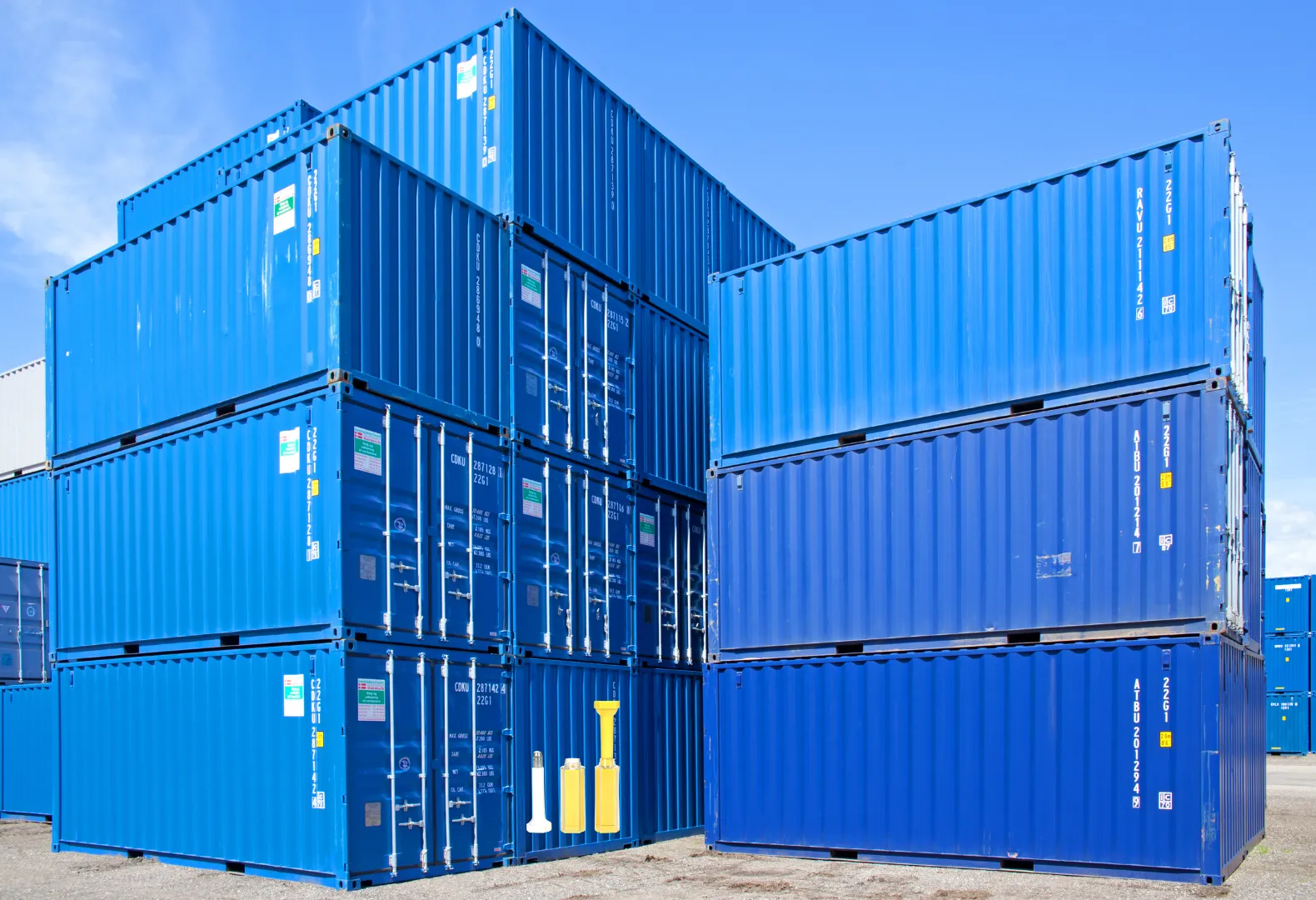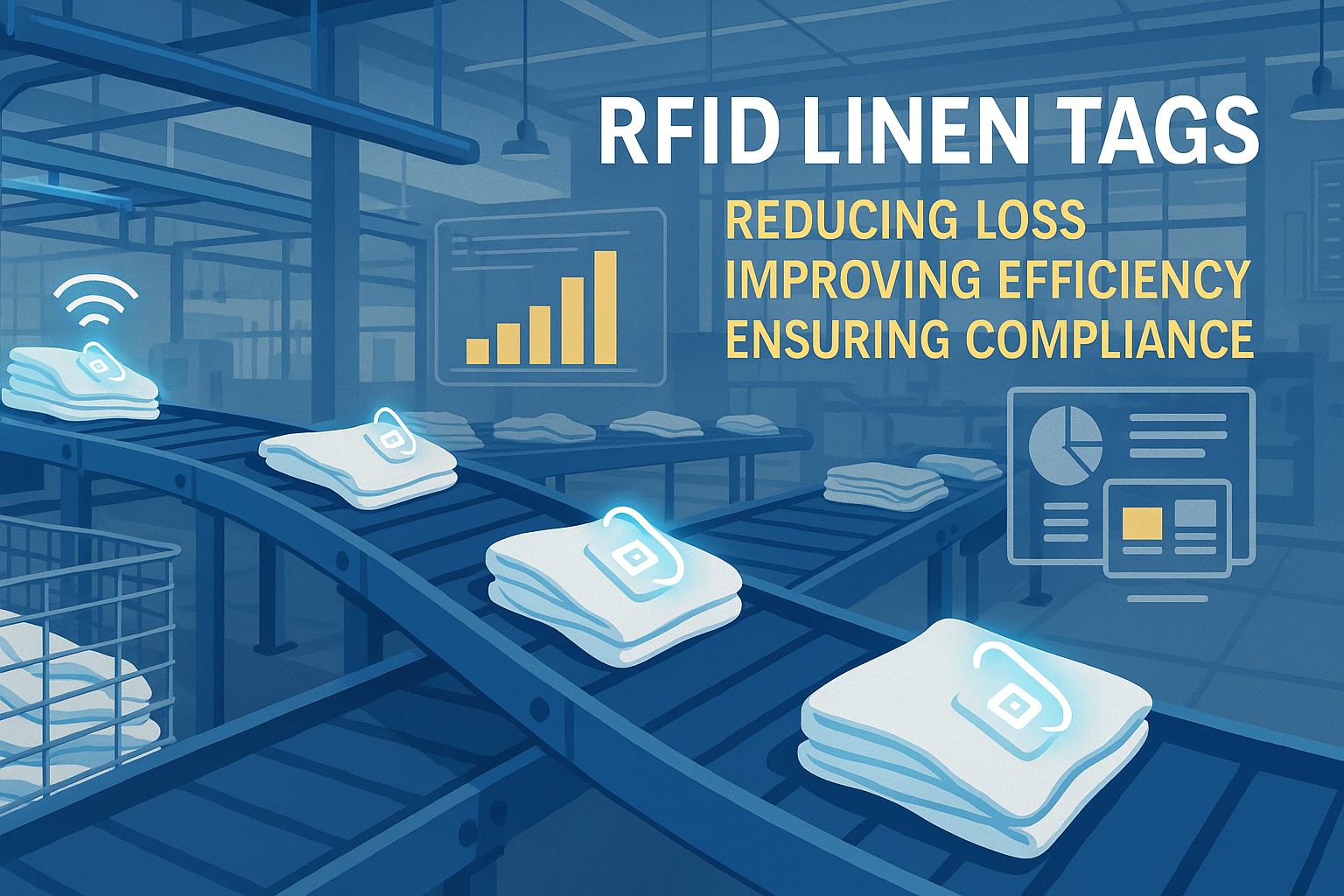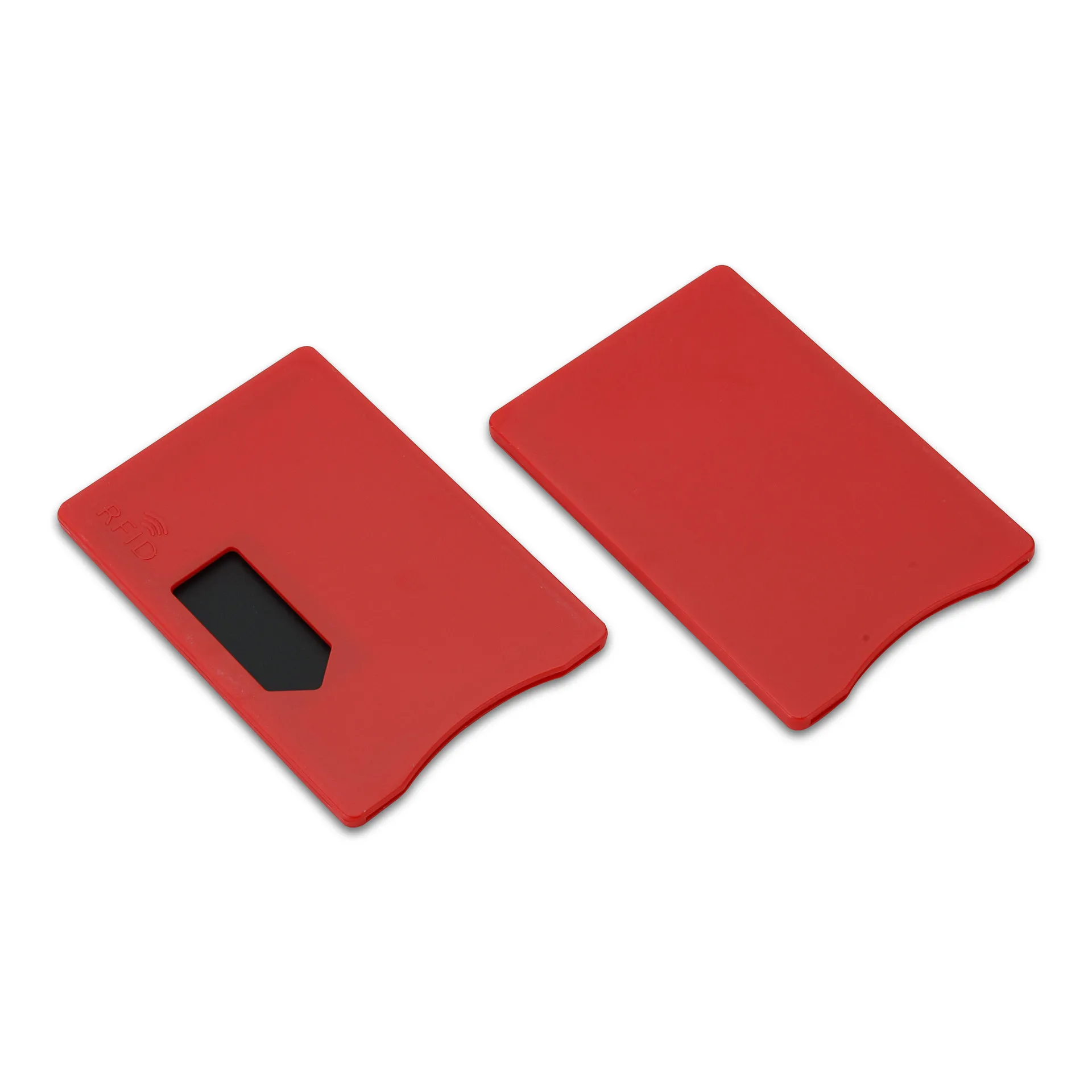
Jaka jest różnica pomiędzy tagami RF i RFID?
Spis treści
Różnica między tagami RF i RFID: definicje, technologia i zastosowania w magazynowaniu
Jednak terminy te są często używane zamiennie, co prowadzi do niejasności co do ich prawdziwego znaczenia i różnic między nimi. Zrozumienie różnicy między technologią RF a RFID pomaga firmom zoptymalizować działalność, poprawić wydajność i dokonywać mądrzejszych inwestycji w technologie.
W niniejszym przewodniku wyjaśniono, w jaki sposób technologia RF i Znaczniki RFID praca, czym się różnią i dlaczego technologia RFID zmienia współczesne łańcuchy dostaw.

Czym jest technologia RF i jak działa?
RF (częstotliwość radiowa) odnosi się do wykorzystania fal elektromagnetycznych do bezprzewodowej transmisji danych. Stanowi podstawę kilku systemów komunikacji bezprzewodowej, w tym technologii RFID, Wi-Fi i Bluetooth.
Kluczowe elementy technologii RF:
- Nadajnik i odbiornik: generują i przechwytują sygnały radiowe.
- Zakres częstotliwości: Działa w zakresie od kilku kiloherców (kHz) do gigaherców (GHz), w zależności od zastosowania.
- Zastosowania: Powszechnie stosowane w systemach komunikacyjnych, pilotach do bram garażowych, mikrofonach bezprzewodowych i systemach bezpieczeństwa.
Krótko mówiąc, technologia RF stanowi bezprzewodową podstawę umożliwiającą identyfikację, komunikację i wymianę danych, a technologia RFID jest jednym z jej najbardziej wyspecjalizowanych zastosowań.
Czym jest RFID i jak działa?
RFID (identyfikacja radiowa) opiera się na technologii RF, umożliwiając bezprzewodową identyfikację i śledzenie oznaczonych obiektów.
System RFID składa się z:
- Znaczniki RFID
- Czytnik RFID
- Antena i system oprogramowania
Jak działa technologia RFID:
- Aktywacja czytelnika: Czytnik RFID wysyła sygnał radiowy za pośrednictwem anteny.
- Odpowiedź tagu: Tag RFID przechwytuje energię z tego sygnału i przesyła zapisane dane.
- Rejestracja danych: czytnik odbiera odpowiedź tagu i przesyła dane do centralnej bazy danych lub systemu zarządzania magazynem (WMS).
W przeciwieństwie do kodów kreskowych, tagi RFID nie wymagają skanowania w linii wzroku — umożliwiając jednoczesne odczytywanie wielu tagów i poprawiając wydajność w ruchliwych środowiskach.
Różnica między RF a RFID
Podczas gdy RF reprezentuje szerszą kategorię komunikacji bezprzewodowej, RFID jest konkretnym zastosowaniem technologii RF przeznaczonym do identyfikacji przedmiotów i śledzenia danych.
| Funkcja | RF | RFID |
|---|---|---|
| Definicja | Ogólne wykorzystanie fal radiowych do bezprzewodowej transmisji danych | Zastosowanie częstotliwości radiowej do identyfikacji i śledzenia obiektów |
| Główne komponenty | Nadajnik i odbiornik | Tagi, czytniki, anteny i oprogramowanie do zarządzania |
| Rodzaj komunikacji | Podstawowa transmisja sygnału | Dwukierunkowa identyfikacja i wymiana danych |
| Aplikacje | Radia, piloty, Wi-Fi, systemy bezpieczeństwa | Zarządzanie magazynem, logistyka, handel detaliczny, kontrola dostępu |
| Funkcjonalność danych | Przesyła surowe dane sygnału | Transfery przechowywanych informacji cyfrowych powiązanych z aktywami fizycznymi |
Jak działają tagi RFID
Tagi RFID to miniaturowe urządzenia, które przechowują i wysyłają dane do czytnika RFID. Każdy tag zawiera:
- Mikrochip (IC): przechowuje unikalne dane identyfikacyjne.
- Antena: odbiera energię i wysyła sygnały.
- Podłoże/wkładka: chroni elementy wewnętrzne.
Gdy tag znajdzie się w zasięgu czytnika RFID, przesyła dane, takie jak unikalny identyfikator lub kod produktu, umożliwiając wgląd w czasie rzeczywistym w operacje magazynowe lub łańcuch dostaw.
Rodzaje tagów RFID
1. Pasywne tagi RFID
- Źródło zasilania: brak wewnętrznej baterii; zasilanie z sygnału czytnika.
- Zakres: od kilku centymetrów do kilku metrów.
- Zastosowania: Handel detaliczny, zarządzanie zapasami i znakowanie na poziomie poszczególnych produktów.
2. Aktywne tagi RFID
- Źródło zasilania: Wbudowana bateria zapewniająca ciągłą transmisję sygnału.
- Zasięg: do 100 metrów lub więcej.
- Zastosowania: Śledzenie pojazdów, zarządzanie flotą, monitorowanie dużych aktywów.
Wybór między aktywnymi a pasywnymi tagami RFID zależy od wymagań dotyczących zasięgu, żywotności tagów i budżetu.
Zastosowania technologii RFID w magazynowaniu
Technologia RFID zmienia funkcjonowanie magazynów i łańcucha dostaw, zapewniając automatyzację, dokładność i przejrzystość.
Najważniejsze zastosowania magazynów:
- Zarządzanie zapasami: Widoczność poziomów zapasów i lokalizacji produktów w czasie rzeczywistym.
- Zarządzanie dokami: śledzi towary podczas ich przemieszczania się do i z obiektów.
- Śledzenie zasobów: zapewnia rozliczalność i identyfikowalność przedmiotów o wysokiej wartości.
- Wydajność operacyjna: Ogranicza błędy ręcznego skanowania i koszty pracy.
“Magazyny korzystające z tagów RFID mogą przetwarzać nawet 20 razy więcej ruchów magazynowych w porównaniu z systemami kodów kreskowych”.”
RFID a NFC: podobne, ale różne
Obydwa NFC (komunikacja bliskiego zasięgu) i RFID wykorzystują technologię RF, ale różnią się zasięgiem, przeznaczeniem i możliwościami komunikacyjnymi.
| Funkcja | RFID | NFC |
|---|---|---|
| Zakres | Duży zasięg (do 100 metrów) | Krótki zasięg (do 10 cm) |
| Źródło zasilania | Aktywny lub pasywny | Tylko pasywny |
| Wymiana danych | Jednokierunkowy | Dwukierunkowy (peer-to-peer) |
| Aplikacje | Zarządzanie magazynem, logistyka, śledzenie zasobów | Płatności mobilne, weryfikacja tożsamości, inteligentny dostęp |
NFC można postrzegać jako wyspecjalizowaną podgrupę technologii RFID, idealną do bezpiecznej wymiany danych na krótkim dystansie, podczas gdy tagi RFID dominują w śledzeniu przemysłowym i logistyce.
Rola RF w systemach bezpieczeństwa (integracja EAS)
Systemy elektronicznej ochrony artykułów (EAS) powszechnie wykorzystują tagi RF w celu zapobiegania kradzieżom w sklepach detalicznych lub magazynach.
Jak działa zabezpieczenie tagów RF:
- Umiejscowienie tagu: Tag RF jest przymocowany do towaru.
- Wykrywanie: Bramki bezpieczeństwa skanują aktywne tagi przy wyjściach.
- Ostrzeżenie: Jeśli aktywny tag przejdzie przez bramkę, system uruchamia alarm.
Dzięki integracji technologii RFID systemy EAS zyskują większą dokładność wykrywania i automatyzację podczas realizacji transakcji lub wysyłki.

Często zadawane pytania
Jaka jest główna różnica między RF a RFID?
RF odnosi się do ogólnej komunikacji bezprzewodowej wykorzystującej fale radiowe. RFID to konkretny rodzaj technologii RF wykorzystywanej do śledzenia i identyfikacji za pomocą tagów RFID i czytników.
Czy RFID może zastąpić kody kreskowe w magazynach?
Tak. Tagi RFID nie wymagają bezpośredniej widoczności, zapewniają szybsze przechwytywanie danych i są trwalsze niż tradycyjne kody kreskowe.
Czy tagi RF i tagi RFID są wymienne?
Nie. Tagi RF są prostsze i stosowane głównie w systemach antykradzieżowych. Tagi RFID są bardziej zaawansowane i służą do śledzenia i wymiany danych.
Jak działa tag RFID?
Czytnik RFID wysyła sygnał, tag odpowiada zapisanymi danymi, a system automatycznie je rejestruje — idealne rozwiązanie do inwentaryzacji w czasie rzeczywistym.
Wniosek
Technologia RF stanowi bezprzewodową podstawę nowoczesnej komunikacji, natomiast technologia RFID opiera się na niej, umożliwiając tworzenie inteligentnych, zautomatyzowanych systemów identyfikacji.
- Wykorzystaj tagi RFID do śledzenia w czasie rzeczywistym, automatyzacji i zwiększenia dokładności w magazynowaniu i logistyce.
- Wykorzystaj systemy RF do ogólnych zastosowań komunikacyjnych i sensorycznych.
Rozumiejąc różnicę między technologią RF a RFID, przedsiębiorstwa mogą wybrać odpowiednie narzędzia, które pozwolą im zwiększyć wydajność, obniżyć koszty i zabezpieczyć swoją działalność na przyszłość.

Ray Zhou
Ten artykuł został napisany przez Raya Zhou, eksperta w dziedzinie technologii RFID z ponad 10-letnim doświadczeniem w branży.
Uwagi
Gorące produkty

Czym jest zarządzanie odpadami za pomocą technologii RFID
Wyobraź sobie miasto, w którym każdy kosz na śmieci „mówi” – nie dosłownie, ale za pomocą niewielkiego chipa, który informuje system, kiedy jest pełny, kiedy został opróżniony i gdzie trafiły śmieci. Tak właśnie działa obecnie system zarządzania odpadami oparty na technologii RFID.

Czym są uszczelnienia śrub i jakie są ich zastosowania? | Kompletny przewodnik
W globalnym handlu i logistyce plomby odgrywają kluczową rolę w zapewnianiu bezpieczeństwa i zgodności ładunków. Te małe, ale potężne urządzenia są przeznaczone do blokowania kontenerów transportowych, przyczep i drzwi ładunkowych za pomocą mechanizmu zabezpieczającego przed manipulacją.

Czym jest ochraniacz karty RFID? Korzyści, przypadki użycia i przewodnik zakupu
Technologia RFID (Radio Frequency Identification) jest wszędzie: w kartach kredytowych, identyfikatorach, przepustkach, kluczach do pokoi hotelowych i nie tylko. Oferuje szybkość i wygodę, ale otwiera również drzwi do nowego rodzaju kradzieży cyfrowej zwanej "skimmingiem". W tym miejscu pojawia się ochrona kart RFID.

Opaski RFID na rękę na imprezy: Przewodnik zakupów hurtowych dla organizatorów
Opaski RFID na nadgarstki na imprezy stają się rozwiązaniem dla organizatorów, którzy potrzebują szybszego wejścia, zapobiegania oszustwom i płatności bezgotówkowych na koncertach, festiwalach i obiektach sportowych. W przeciwieństwie do biletów papierowych lub kodów QR, te inteligentne opaski na rękę wykorzystują wbudowane chipy, aby usprawnić dostęp, zabezpieczyć transakcje i poprawić wrażenia gości.

Jak znacznik RFID na przedniej szybie usprawnia kontrolę dostępu do pojazdu i systemy poboru opłat drogowych
W dzisiejszym szybko zmieniającym się świecie identyfikacja pojazdów musi być szybka, bezpieczna i bezdotykowa. Znacznik RFID na przedniej szybie zapewnia właśnie to - niezawodny sposób zarządzania poborem opłat, parkowaniem i dostępem do bramek bez zatrzymywania pojazdów.

Korzyści z tagów RFID do bielizny w pralniach komercyjnych
Zarządzanie pralnią w szpitalach, hotelach lub dużych pralniach to duże zadanie. Każdego dnia tysiące prześcieradeł, ręczników i uniformów jest pranych, sortowanych i wysyłanych z powrotem. Jednak problemy takie jak zagubiona pościel, błędy w sortowaniu i ręczne liczenie mogą kosztować firmy dużo pieniędzy. Na przykład, średniej wielkości hotele mogą tracić ponad $200,000 każdego roku z powodu zaginionej pościeli.
W tym miejscu z pomocą przychodzą znaczniki RFID Linen Tag.
Tagi
POWIĄZANE BLOGI

Czym jest zarządzanie odpadami za pomocą technologii RFID
Wyobraź sobie miasto, w którym każdy kosz na śmieci „mówi” – nie dosłownie, ale za pomocą niewielkiego chipa, który informuje system, kiedy jest pełny, kiedy został opróżniony i gdzie trafiły śmieci. Tak właśnie działa obecnie system zarządzania odpadami oparty na technologii RFID.

Czym są uszczelnienia śrub i jakie są ich zastosowania? | Kompletny przewodnik
W globalnym handlu i logistyce plomby odgrywają kluczową rolę w zapewnianiu bezpieczeństwa i zgodności ładunków. Te małe, ale potężne urządzenia są przeznaczone do blokowania kontenerów transportowych, przyczep i drzwi ładunkowych za pomocą mechanizmu zabezpieczającego przed manipulacją.

Czym jest ochraniacz karty RFID? Korzyści, przypadki użycia i przewodnik zakupu
Technologia RFID (Radio Frequency Identification) jest wszędzie: w kartach kredytowych, identyfikatorach, przepustkach, kluczach do pokoi hotelowych i nie tylko. Oferuje szybkość i wygodę, ale otwiera również drzwi do nowego rodzaju kradzieży cyfrowej zwanej "skimmingiem". W tym miejscu pojawia się ochrona kart RFID.




